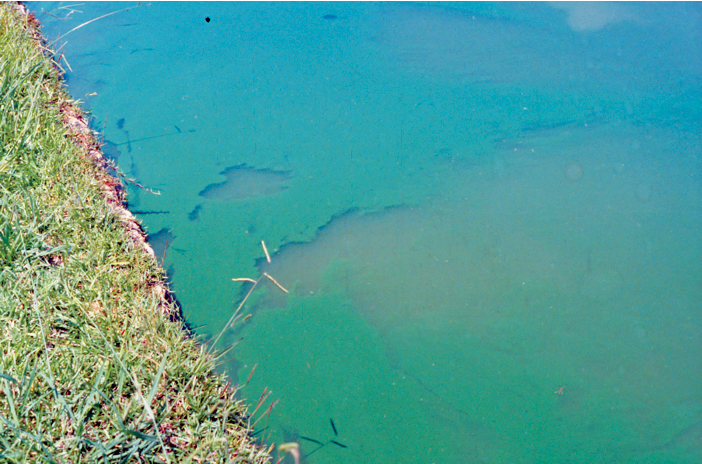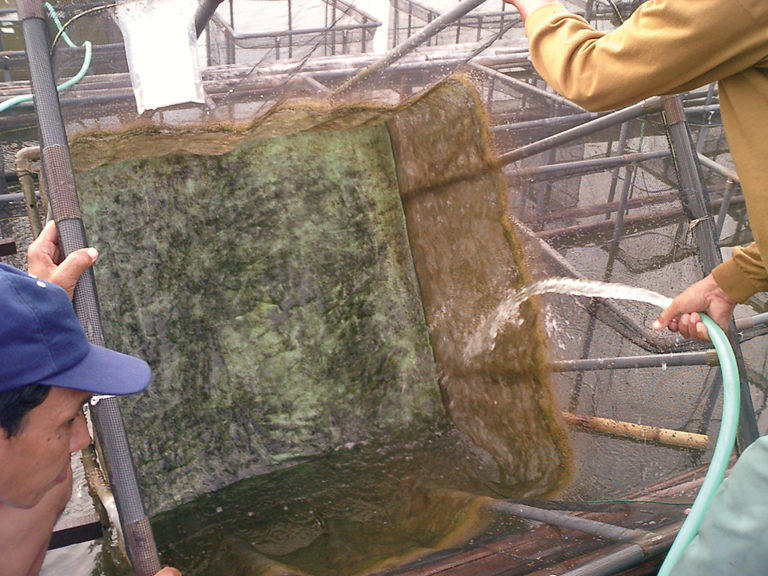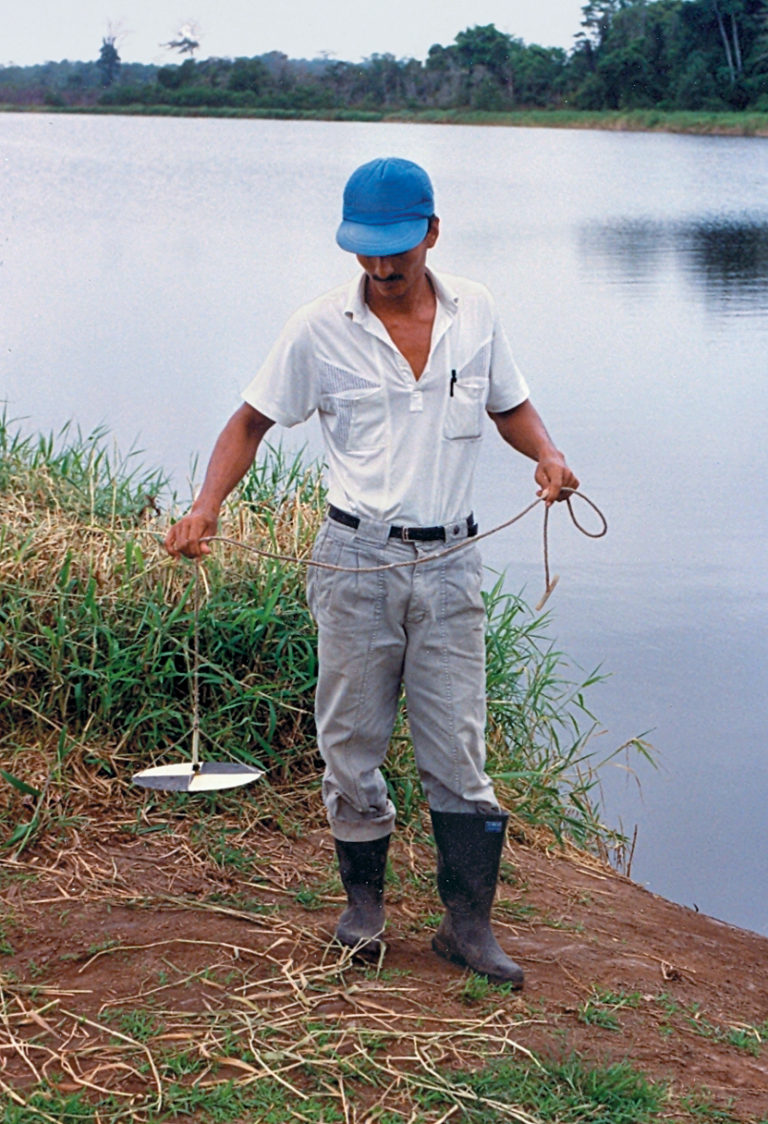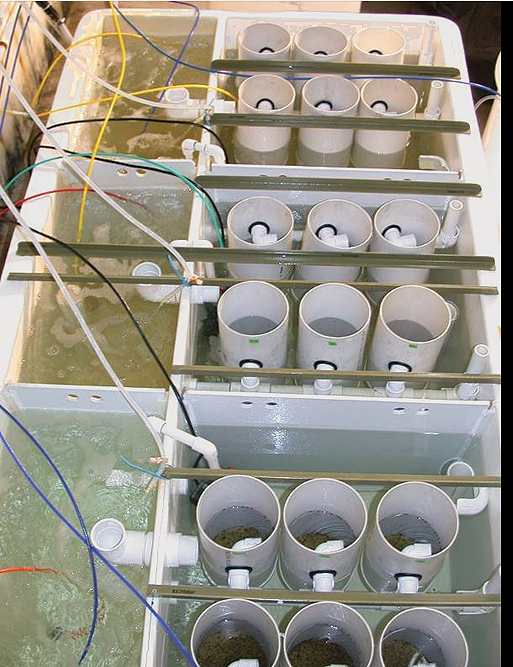
Responsibility
Phytoplankton in aquaculture ponds
Aquaculture ponds typically have ideal conditions for the growth of various species of phytoplankton. Green algae are considered most desirable in freshwater ponds.
Health & Welfare
Sea bream fry are produced using the greenwater technique in which microalgae are added to larval-rearing tanks during the first 20 to 30 days after hatching.

Responsibility
Aquaculture ponds typically have ideal conditions for the growth of various species of phytoplankton. Green algae are considered most desirable in freshwater ponds.

Health & Welfare
By comparing the growth of shrimp fed different diets in big versus small net pens, trial results suggested that shrimp could compensate for lower diet quality by grazing on the algae growing on the surfaces of the net cages.

Responsibility
Phytoplankton are essential in intensive aquaculture ponds but an excess can result in shallow thermal stratification.

Health & Welfare
Although the hatchery rearing of bivalves currently relies heavily on the mass production of microalgae, new feed alternatives are being developed.